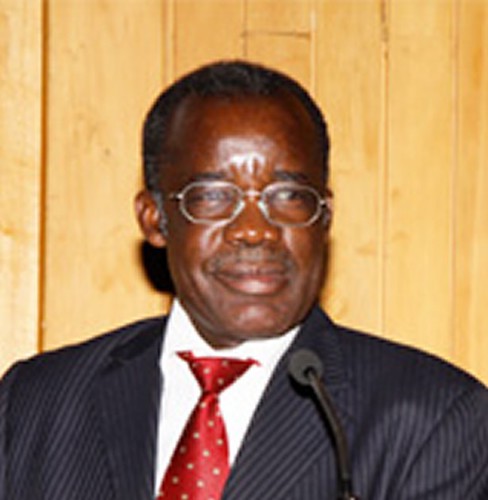
Prof. Francis Gudyanga, Secretary for Mines in the Republic of Zimbabwe, represented the Southern African state during a visit to Antwerp, Belgium., a photo by Pan-African News Wire File Photos on Flickr.
Honeymoon over for miners
January 8, 2014
Martin Kadzere Senior Business Reporter
Zimbabwe Herald
GOVERNMENT has invited mining firms to submit, by Saturday next week, proposals for the establishment of beneficiation facilities as the deadline to ban exports of raw platinum concentrates approaches. The Government gave existing platinum miners two years at the beginning of last year to set up a refinery, but there has been no meaningful progress.
The two years end in December this year, and thereafter, exportation of raw platinum concentrate will be banned.
Producers of base metals, mainly nickel and chrome, are also expected to make their proposals.
The settler regime banned exports of base metal ores and concentrates and insisted that all chrome, nickel and copper was refined to at least high intermediate levels in the country.
Chrome was normally refined into bars of ferrochrome, while copper was refined to very high levels of purity during that time.
The refineries later closed.
In the meantime, Finance Minister Patrick Chinamasa proposed that companies be levied 15 percent on exports of raw platinum with effect from January 1 this year.
Local mining companies have to establish at least two refineries, one for base metals which separates nickel, copper and cobalt and a precious metals refinery which separates nine different metals including platinum, palladium, gold and rhodium.
Zimbabwe, with second largest known platinum reserve in the world after South Africa, has three major platinum firms – Zimplats, Mimosa Mining Company and Unki Mines.
In a letter to the 10 mining firms, secretary for Mines and Mining Development Professor Francis Gudyanga, said failure by platinum miners to set up value addition facilities by December this year would result in a ban of raw platinum exports.
“The Government of Zimbabwe therefore invites you, in addition to other companies, to put forward an expression of interest to establish the refinery on your own or as lead company in concert with other companies,” said Professor Gudyanga.
“Once the refinery plant is established all the producers in the country will be compelled to send the PGMs concentrate to this facility for toll refinery in support of such investment.”
Companies willing to establish the beneficiation facilities would be required to demonstrate viable technical capability and financial capacity to undertake the projects.
They will also be required to set supporting infrastructural facilities such as electricity and water.
The interested companies should indicate timelines at which acceptable milestones are achieved towards building smelter, base metal and precious metal refineries. They should also demonstrate envisaged partnerships with the Government.
With PGMs annual output currently at about 430 000 ounces, the refinery must be able to accommodate current production, plus additional capacity arising from expansion.
In view of the volatility that has characterised mineral prices on the global markets, analysts said the need to value add metals had become more critical to neutralise the impact of fluctuations in mineral prices.
Zimbabwe has not been spared the effect of a volatile global commodities market and that reflected in the revision of the country’s projected mineral exports of about US$1,8 billion against US$2 billion in 2012.
With mining officially declared the centerpiece of Zimbabwe’s economic growth, under the Zimbabwe Agenda for Sustainable Socio-Economic Transformation, building a buffer against unforeseen potential decline in mineral exports is critical.
Beneficiation and value addition have been earmarked as a critical component of achieving targets espoused in the medium term economic blueprint covering 2014 to 2018.
And considering that beneficiation and value addition have been adopted as a policy priority, it is high time that Zimbabwe swiftly adopted measures to ensure full benefit from its resources.
Prof Gudyanga said Zimbabwe had sufficient PGMs reserves, mainly in the Great Dyke to warrant the establishment of comprehensive value addition facilities.
Efforts to get a comment from the Platinum Producers Association were unsuccessful.
But previously, the platinum producers said they needed to achieve a minimum production rate of 500 000 ounces per year if the country is to set up a platinum refinery.
As such, with capacity already trudging closer to that level, platinum miners should start demonstrating firm commitment towards rolling out the project.
Platinum miners undertook a study which showed an investment of at least US$3 billion would be required for the refinery.
There would also be need for an additional 100MW of electricity, which means the platinum sector would require a total of 400MW.
In 2011, the Government banned exports of raw chrome and this triggered some meaningful investments in value addition facilities. The Government has since lifted the ban.
No comments:
Post a Comment